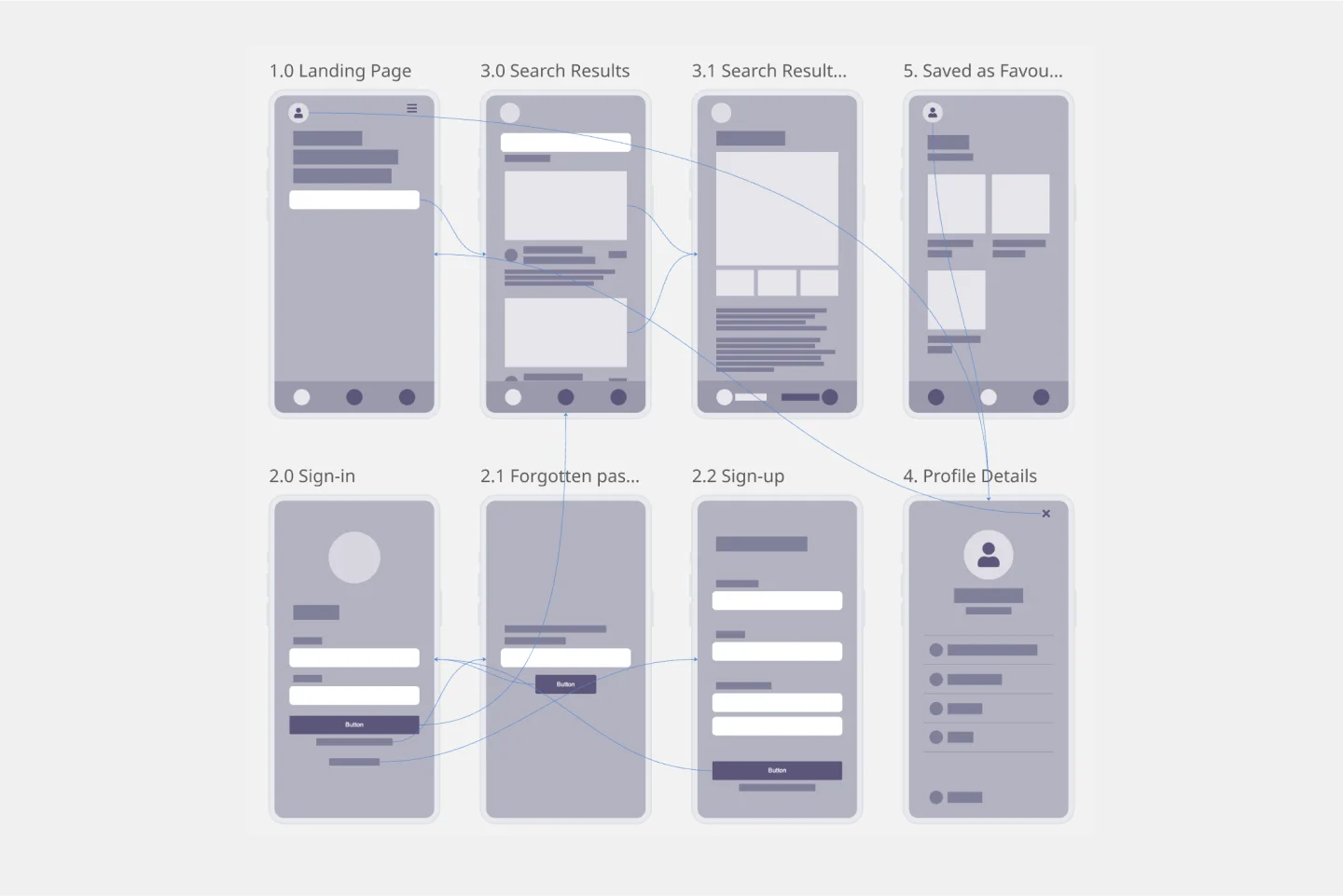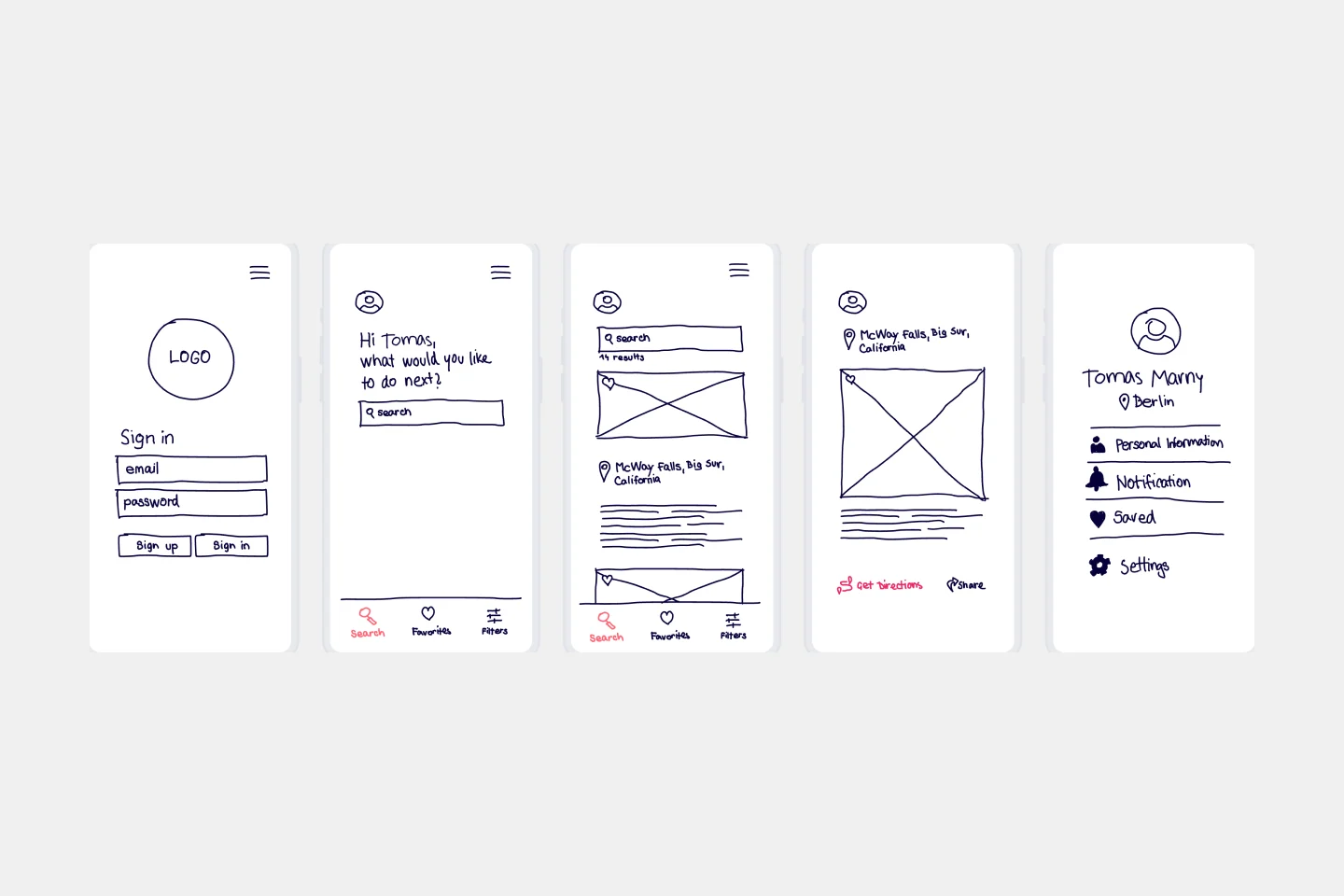About the User Interview Template
The user interview template is where you can keep track of your user interviews, adding the questions, answers, and any other information you might find helpful to build a profile of your user and conduct user research.
What is a user interview?
User interviews are a UX research technique where researchers ask users questions about a topic. You can use the user interview template to prepare your questions and take note of the interviewee’s responses. It allows your team to quickly and easily collect user data, and it’s also a great way to learn more about who uses your product.
When to conduct user interviews
Product teams, UX designers and writers gather background data to understand how people use technology. It’s a way to take a snapshot of how users interact with a product, understand user objectives and motivations, and find users’ pain points.
It’s an important step when developing or iterating an existing service or product. That’s why marketing, business, and development teams often find it helpful to conduct a user interview to gain insights and develop better strategies and solutions.
Benefits of conducting user interviews
There are many advantages to conducting user interviews, especially if you are developing a product or improving a service. It allows researchers to understand the user experience, gives a clear picture of a product’s usability, and enables companies to gather demographic or ethnographic data that can be used to create user personas.
Who should implement the user interview template
Two UX researchers, product managers, or other product team members generally conduct user interviews. That doesn't mean that other people can’t join the process; marketing researchers and strategists may also take part in the interview as listeners and take notes to develop a user persona.
How to structure your user interview
Start explaining the purpose of the interview. Tell the interviewee what you plan to cover and what you’re trying to accomplish in the interview. Then explain how user data will be used afterward.
Afterward, start your interview. Make sure you’re not priming the interviewee at any point during the conversation. For example, if you’re trying to figure out how people are using your podcast app, ask them, “Do you use any podcast apps?” rather than “How often are you using our podcast app?”
A good practice is to create space for answers to flourish, and by that, we mean asking open-ended questions so they can elaborate on their answers. Another tip is to try keeping the interview short, under an hour.
At the end of the interview, thank the user for coming and give them the opportunity to ask any questions of their own.
Common user interview questions
Tell me about your background.
How often do you use [similar products in our space]?
When you are using these products, do you encounter any challenges?
What are the most important tasks you perform while using these products?
Is there anything you wish you could do with these products which is currently not possible?
Are there any ways these products do not support your current needs?
Set up your own user interview template
The user interview template is designed to capture the most relevant information from your user interviews. In addition to the details of the interview and interviewee, you may want to include questions asked and topics covered, as well as user observations and feedback and key takeaways or action points for your team.
The user interview template can also be referred to later and used as a strategic tool to develop a complete customer journey map. Share your user interview template with your team and stakeholders and ask for feedback or brainstorm based on your findings to gain insights.
FAQ about user interviews
How do you create user interview questions?
Depending on what you are trying to discover, you can direct your interview differently. When creating user interview questions, some standard practices include asking open-ended questions that require more than a single word answer and questions that make you understand your user’s tasks. Another important thing to remember is to ask about their feelings, opinions, and pain points regarding a specific topic. You can also ask them to compare services or explain how they compare to another similar experience.
How many participants do you need for user interviews?
You can conduct the interview yourself, but UX and research teams commonly gather together to observe and make notes. Ideally, you would have one more person with you at the interview.

Miro
Your virtual workspace for innovation
Miro is an innovation workspace designed for teams of every size, everywhere, to dream, design, and build the future together. Our mission? To empower these teams to create the next big thing, powered by AI at every step of the way. Over 90 million users around the world rely on Miro to untangle complex ideas, put customer needs first, and deliver products and services faster. All supported by best-in-class security, compliance, and scalability.
Categories
Similar templates
UX Research Plan Template

UX Research Plan Template
A research plan communicates the fundamental information that stakeholders need to understand about a user experience research project: who, what, why, and when. The plan ensures everyone is aligned and knows what they must do to make the UX research project a success. Use the research plan to communicate background information about your project; objectives; research methods; the scope of the project, and profiles of the participants. By using a UX research plan, you can achieve stakeholder buy-in, stay on track, and set yourself up for success.
Screen Flow Template

Screen Flow Template
A screen flow (or wireflow) brings together a multi-screen layout that combines wireframes with flowcharts. The result is an end-to-end flow that maps out what users see on each screen and how it impacts their decision-making process through your product or service. By thinking visually about what your customers are looking at, you can communicate with internal teams, stakeholders, and clients about the decisions you’ve made. You can also use a screen flow to find new opportunities to make the user experience frictionless and free of frustration from start to end.
HEART Framework Template

HEART Framework Template
Happiness, Engagement, Adoption, Retention, and Task Success. Those are the pillars of user experience — which is why they serve as the key metrics in the HEART framework. Developed by the research team at Google, this framework gives larger companies an accurate way to measure user experience at scale, which you can then reference throughout the product development lifecycle. While the HEART framework uses five metrics, you might not need all five for every project — choose the ones that will be most useful for your company and project.
Low-Fidelity Prototype Template

Low-Fidelity Prototype Template
Low fidelity prototypes serve as practical early visions of your product or service. These simple prototypes share only a few features with the final product. They are best for testing broad concepts and validating ideas. Low fidelity prototypes help product and UX teams study product or service functionality by focusing on rapid iteration and user testing to inform future designs. The focus on sketching and mapping out content, menus, and user flow allows both designers and non-designers to participate in the design and ideation process. Instead of producing linked interactive screens, low fidelity prototypes focus on insights about user needs, designer vision, and alignment of stakeholder goals.
UX Research Plan Template

UX Research Plan Template
A research plan communicates the fundamental information that stakeholders need to understand about a user experience research project: who, what, why, and when. The plan ensures everyone is aligned and knows what they must do to make the UX research project a success. Use the research plan to communicate background information about your project; objectives; research methods; the scope of the project, and profiles of the participants. By using a UX research plan, you can achieve stakeholder buy-in, stay on track, and set yourself up for success.
Screen Flow Template

Screen Flow Template
A screen flow (or wireflow) brings together a multi-screen layout that combines wireframes with flowcharts. The result is an end-to-end flow that maps out what users see on each screen and how it impacts their decision-making process through your product or service. By thinking visually about what your customers are looking at, you can communicate with internal teams, stakeholders, and clients about the decisions you’ve made. You can also use a screen flow to find new opportunities to make the user experience frictionless and free of frustration from start to end.
HEART Framework Template

HEART Framework Template
Happiness, Engagement, Adoption, Retention, and Task Success. Those are the pillars of user experience — which is why they serve as the key metrics in the HEART framework. Developed by the research team at Google, this framework gives larger companies an accurate way to measure user experience at scale, which you can then reference throughout the product development lifecycle. While the HEART framework uses five metrics, you might not need all five for every project — choose the ones that will be most useful for your company and project.
Low-Fidelity Prototype Template

Low-Fidelity Prototype Template
Low fidelity prototypes serve as practical early visions of your product or service. These simple prototypes share only a few features with the final product. They are best for testing broad concepts and validating ideas. Low fidelity prototypes help product and UX teams study product or service functionality by focusing on rapid iteration and user testing to inform future designs. The focus on sketching and mapping out content, menus, and user flow allows both designers and non-designers to participate in the design and ideation process. Instead of producing linked interactive screens, low fidelity prototypes focus on insights about user needs, designer vision, and alignment of stakeholder goals.